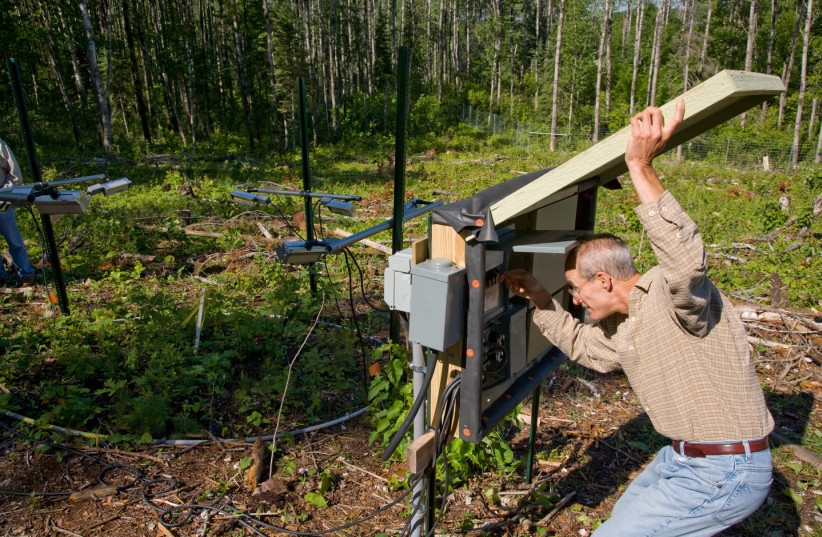Climate change is arguably the most important yet oft-ignored issue facing the human race today. A recent study based on a five-year open-air study in Minnesota's southern boreal forest shows varying responses to modest climate alteration among nine North American tree species: balsam fir, white spruce, jack pine, white pine, red maple, sugar maple, paper birch, bur oak and red oak.
“In the experiment, we are subjecting forest plots to temperatures that we won't see for another 40 or 50 or 60 years to understand what those oncoming temperatures will do.”
Dr. Peter Reich
The unique experiment led by University of Michigan ecologist Dr. Peter B. Reich used infrared lamps, soil heating cables and movable tarps to study the impact of minor levels of climate warming and shifts in precipitation that may be coming to North America in the near future.
“Our results spell problems for the health and diversity of future regional forests,” he said.
According to the peer-reviewed study published earlier this month in Nature, Global Warming (+1.6°C or +3.1°C above ambient temperature) alone or combined with reduced rainfall increased juvenile mortality of all species, particularly boreal conifers. In general, warmer and drier conditions resulted in the most adverse impacts on tree growth and survival.
Predictions for the forest's future

Reich explained that the projected state of the forest is “at best, likely to be a more impoverished version of our current forest. At worst, it could include high levels of invasive woody shrubs, which are already common at the temperate-boreal border and are moving north quickly.”
It is predicted by the study's authors that climate change, as it is projected now, will likely cause regeneration failure of the currently dominant southern boreal species, which will only slowly be replaced with the rarer species that can survive in dry heat. This is predicted to have adverse impacts on the entire local ecosystem.
“Those impacts could reduce the capacity of our forests to produce timber, to host other plant, microbial and animal diversity, to dampen flooding, and – perhaps most important of all – to scrub carbon out of the air and hold it in wood and soil.”
Dr. Peter Reich
“In the experiment, we are subjecting forest plots to temperatures that we won't see for another 40 or 50 or 60 years to understand what those oncoming temperatures will do,” Reich said.
The boreal forests are one of the Earth's largest nearly intact forested ecosystems, which generate a significant amount of the planet's carbon.
“Those impacts could reduce the capacity of our forests to produce timber, to host other plant, microbial and animal diversity, to dampen flooding, and – perhaps most important of all – to scrub carbon out of the air and hold it in wood and soil,” Reich explained.
The other authors of the Nature paper are Raimundo Bermudez, Rebecca Montgomery, Karen Rice, Sarah Hobbie and Artur Stefanski of the University of Minnesota, and Roy Rich of the Smithsonian Environmental Research Center. The research was supported by the US Department of Energy, the National Science Foundation, the Minnesota Agricultural Experiment Station and the University of Minnesota.
